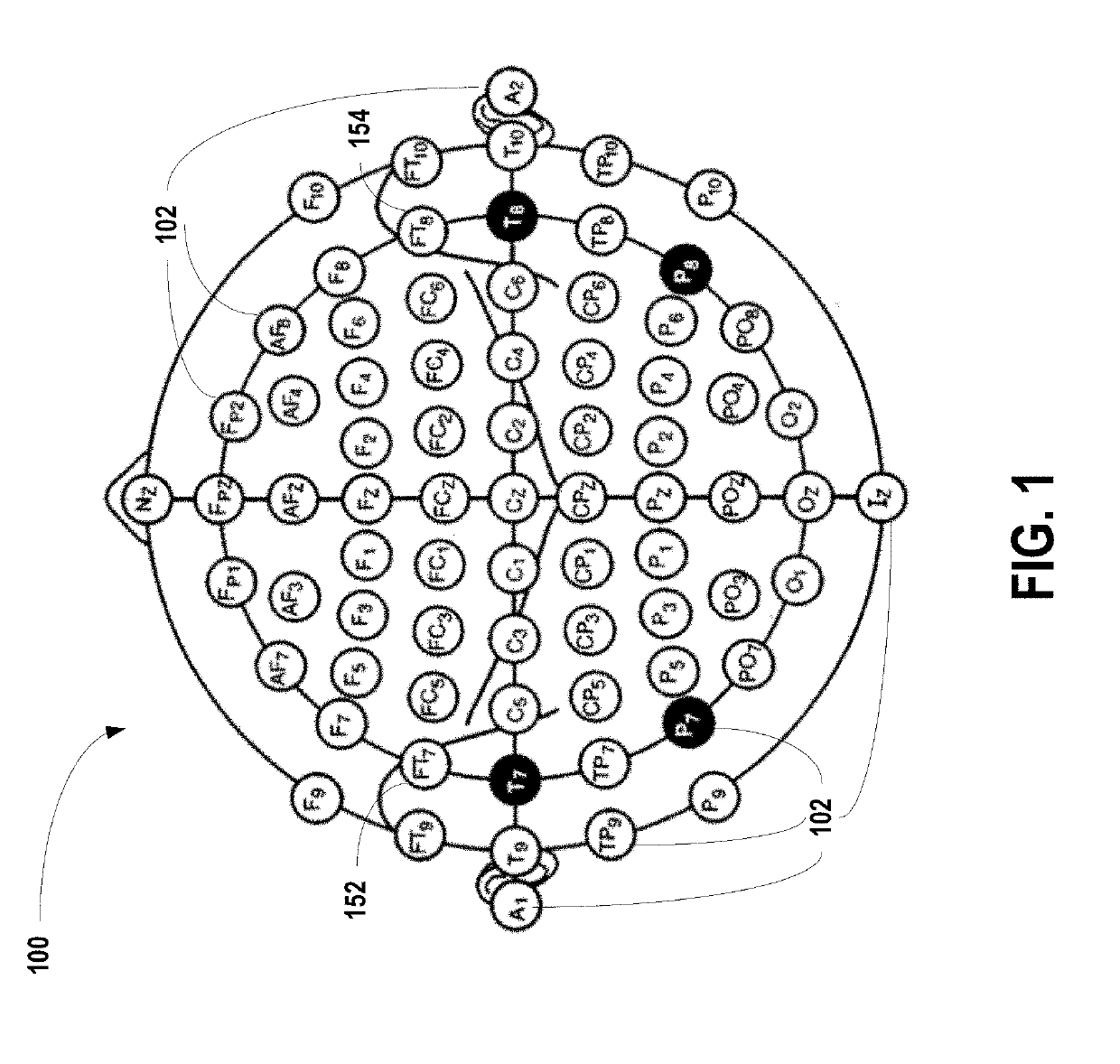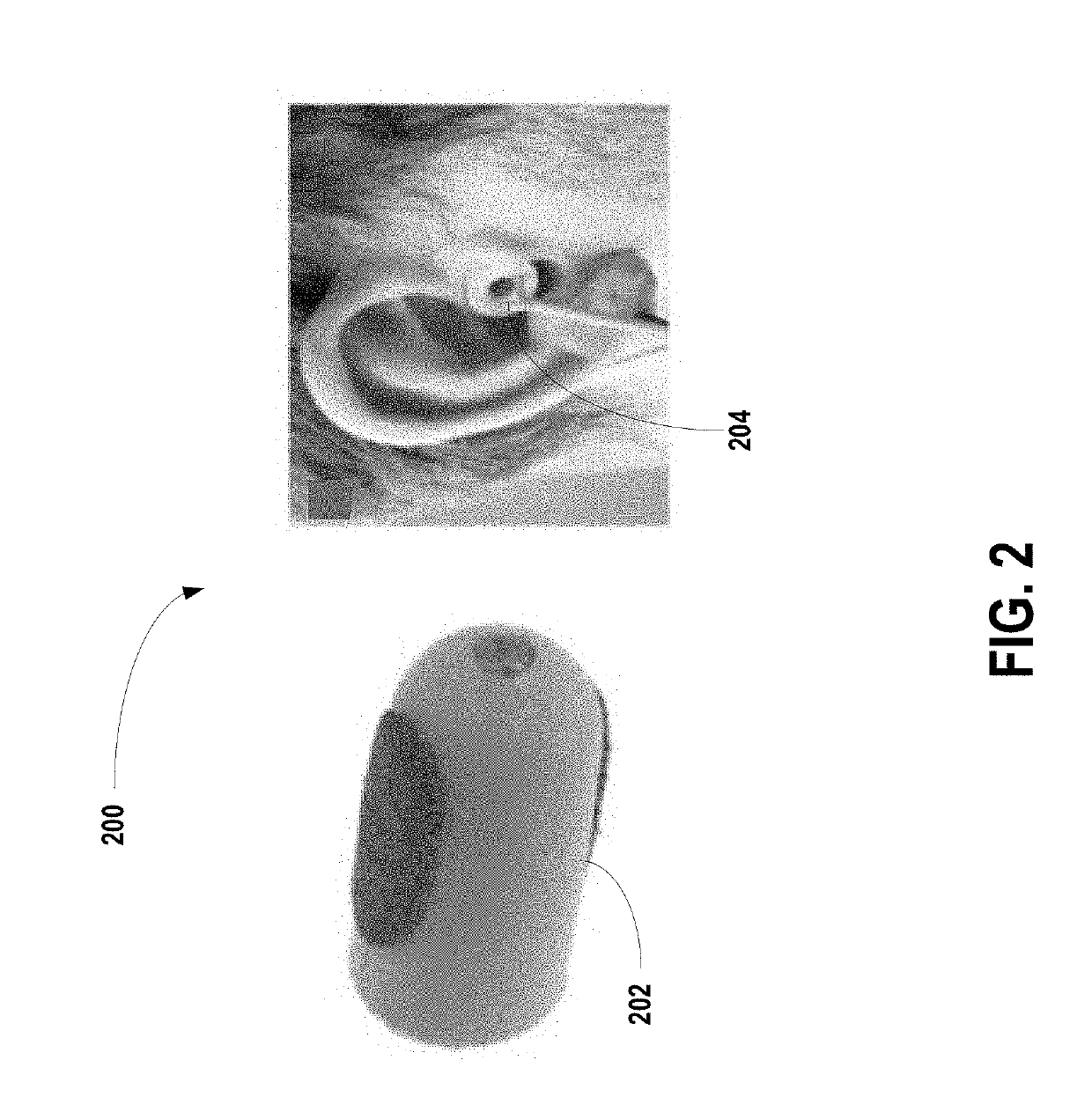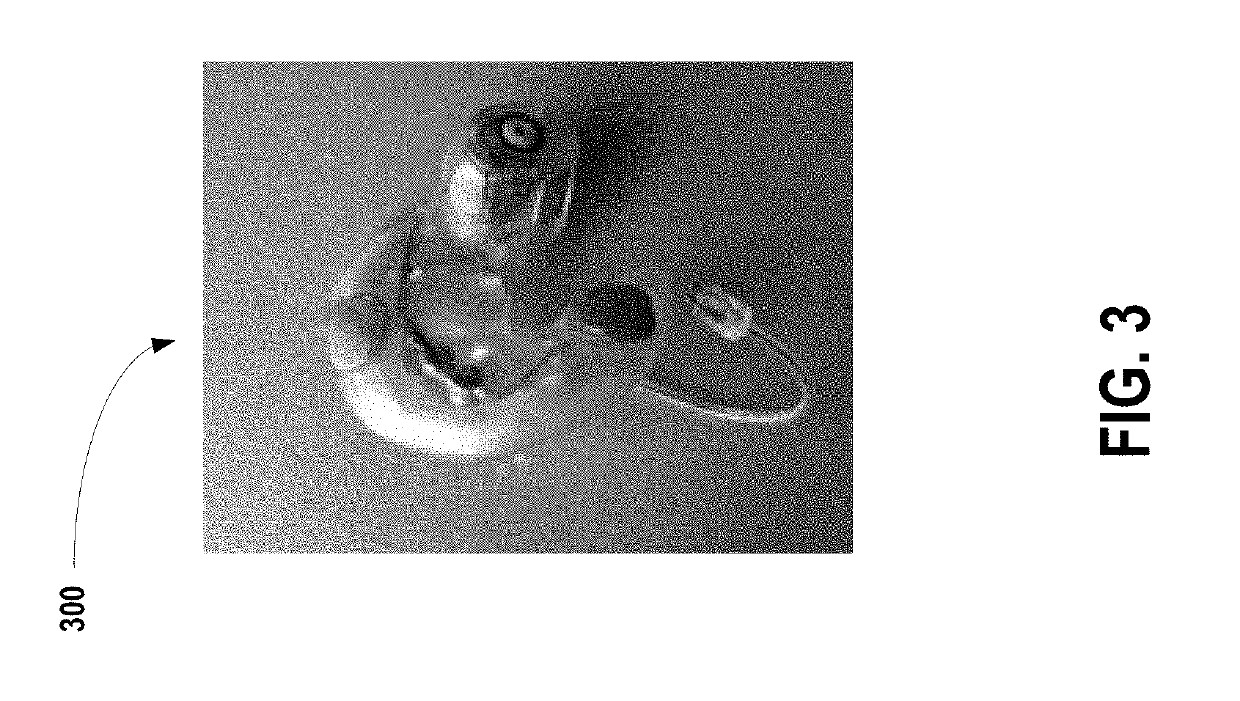In-ear eeg device and brain-computer interfaces
a brain-computer interface and electrode-electronic technology, applied in the field of brain-computer interfaces and electroencephalogram devices, can solve the problems of long setup time, patient discomfort, and difficulty in reducing electrode impedances
- Summary
- Abstract
- Description
- Claims
- Application Information
AI Technical Summary
Benefits of technology
Problems solved by technology
Method used
Image
Examples
Embodiment Construction
[0036]The present disclosure relates to in-ear EEG as a measurement system. Its small size provides improved user comfort, especially over long periods of time. The size and location also allows for improved discreetness. The location of the electrodes also provides robustness against eye-blink artifacts (though introduces greater susceptibility to artifacts related to facial muscle movements, i.e., mastication). There may be a limited number of electrodes, which precludes the use of EEG processing techniques such as independent component analysis (ICA). It is desirable to overcome the processing hurdles and relatively limited data.
[0037]Embodiments of methods, systems, and apparatus are described through reference to the drawings.
[0038]Some embodiments herein relate to in-ear electroencephalography (EEG) devices. The following terms are used in this disclosure:
[0039]ASSR: auditory steady-state response.
[0040]BCI: brain-computer interface.
[0041]CAD: computer-aided design.
[0042]CMRR:...
PUM
 Login to View More
Login to View More Abstract
Description
Claims
Application Information
 Login to View More
Login to View More - R&D
- Intellectual Property
- Life Sciences
- Materials
- Tech Scout
- Unparalleled Data Quality
- Higher Quality Content
- 60% Fewer Hallucinations
Browse by: Latest US Patents, China's latest patents, Technical Efficacy Thesaurus, Application Domain, Technology Topic, Popular Technical Reports.
© 2025 PatSnap. All rights reserved.Legal|Privacy policy|Modern Slavery Act Transparency Statement|Sitemap|About US| Contact US: help@patsnap.com



